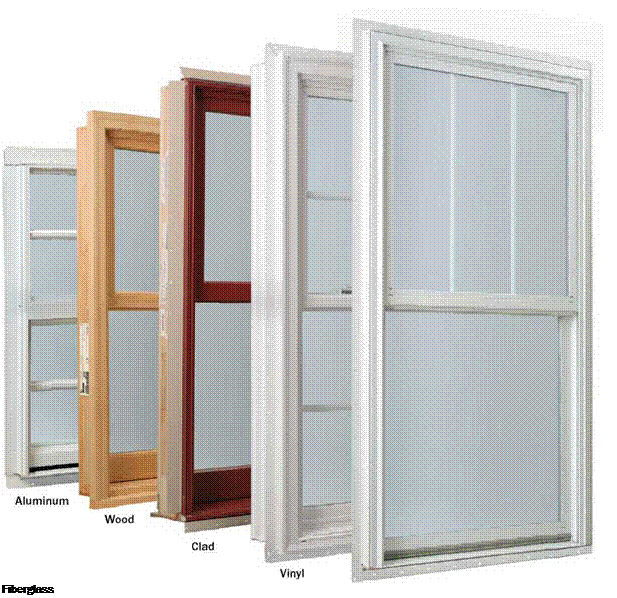A Buyer’s Guide to Windows
■ BY SEAN GROOM
|
W |
hen you roll up to a house for the first time, you can’t help but notice the windows. Their size, style, and placement determine if they’re appropriate to the architectural style and, to some degree, if the house will be a pleasure to be in.
For most people, that’s as much thought as they give to windows. And that’s too bad, because picking the right windows can lower heating and/or cooling costs, improve comfort inside the house, and improve indoor-air quality by dramatically limiting condensation.
To buy the best-performing windows for your house, though, you need to know a bit about how they work and what they need to do.
A Window Has Four Basic Jobs
The first thing a window has to do is control heat gain and loss. Technically, these temperature changes take place through conduction, convection, and radiation. As a practical matter, these temperature changes affect your comfort. If you’re sitting next to a window, you’ll experience conduction and convection when the glass acts as a cold radiator in the winter; and you’ll experience
radiation on a sunny day when you feel like an ant trapped under a magnifying glass.
Second, a window must control solar – heat gain. I say control because heat gain isn’t always bad. If you live in a heating climate—generally speaking, anywhere north of Oklahoma with the exception of California—you should take advantage of the free heat windows can provide.
Third, windows need to regulate airflow. They should be airtight when closed and also offer fresh air when you want it.
Finally, windows provide natural light and frame views both near and far.
Frame Materials Dictate Performance, Maintenance, and Cost
Aluminum Aluminum frames are strong, durable, inexpensive, and require little maintenance. Aluminum is highly conductive, however, leading to heat loss. To achieve even modest insulating levels, the frame and sashes must be carefully engineered with thermal breaks. Even then, they are best in mild desert climates or on impact – resistant windows in hurricane zones.
Clad Windows with aluminum-, vinyl-, or fiberglass-clad wood frames are the most expensive. A clad unit offers the low – maintenance durability of aluminum, vinyl, or fiberglass on the outside and the thermal resistance and appeal of wood on the inside. Well-engineered aluminum clad
ding should strengthen the window. Custom colors for aluminum cladding can match any paint chip at an additional cost.
Vinyl Vinyl frames are formed of extruded PVC. Multiple chambers in the frames and sashes add rigidity. These chambers also act as insulation in the same way as the airspace between glass panes; some manufacturers fill the chambers with foam insulation to improve the frame’s insulating ability.
Vinyl is available in only a few colors, generally white and some variation on almond. Darker colors absorb too much heat, causing vinyl to deform and degrade. It’s typically the least expensive window.
Fiberglass The best you can get if you want to maximize a frame’s insulating ability, fiberglass is the least conductive material, and the frame can be insulated with foam. More expensive than aluminum, vinyl, or wood, fiberglass requires little maintenance and is durable and extremely strong. It can be extruded in low-profile frames and sashes in several colors and is paintable. Another advantage is that as the temperature changes, fiberglass expands and contracts at a rate almost identical to the glass. This helps to prevent seals along the glass from failing.
Composite Composite windows, like composite decking, are made of wood fibers (sawdust) mixed with vinyl resins. Up to 40 percent of the window content is recycled. Most, if not all, composite windows are sold as replacements by the Renewal By Andersen® division of Andersen® Windows. The material’s tradename is Fibrex®. It looks a lot like wood, will not rot, requires little maintenance, and can be stained on the inside.







Leave a reply